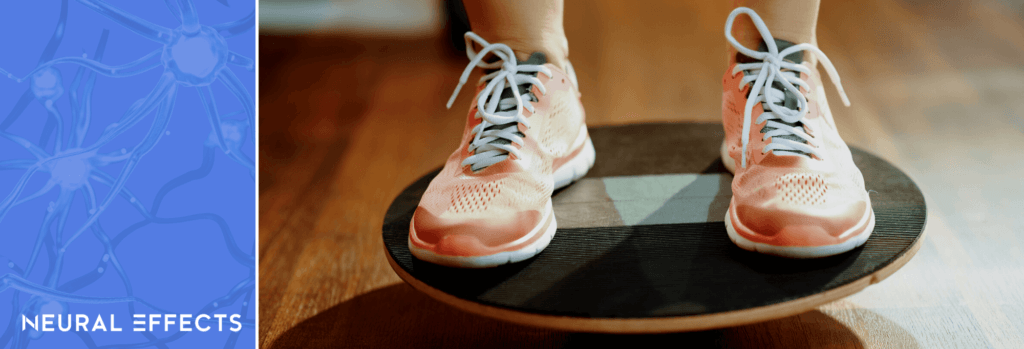Balance is one of those vital functions we take for granted until it’s not working correctly. Up to 7 in 10 patients experience dizziness at some point after a concussion, making it one of the most common complaints after a traumatic head injury.
Vestibular problems — such as dizziness, vertigo, and nausea after certain movements — are associated with poor outcomes after a concussion. In fact, patients who report dizziness at the time of the injury are 6-times more likely to have a delayed recovery. Often, these patients also experience cognitive problems, such as poor processing speed and reaction time. They may go on to develop post-concussion syndrome (defined as concussion symptoms that persist beyond three months).
The bad news is that there is no medication to make the vestibular system go back to normal. You can get pills to control dizziness and nausea, but these will not cure the problem.
The good news is that vestibular therapy is highly effective. This approach helps to reduce dizziness, improve balance, and reduce recovery time after a concussion. This is why we include vestibular therapy among the treatments we offer at Neural Effects.
We offer a multi-disciplinary approach to treat your concussion by combining vestibular therapy, vision therapy, neuromuscular therapy, cognitive therapy, and cardio exercise. That way, we’re able to offer a tailored approach to concussion recovery that helps with both physical and cognitive symptoms.
In this post, we explain more about the vestibular system, what goes wrong after a concussion, and how therapy can help you recover.
If you live in Provo, Salt Lake City, or anywhere else in the Utah valley area, we can help you recover from your concussion and reduce your chance of long-term symptoms. We are in network for most types of medical insurance. Schedule your evaluation today.
What Is the Vestibular System?
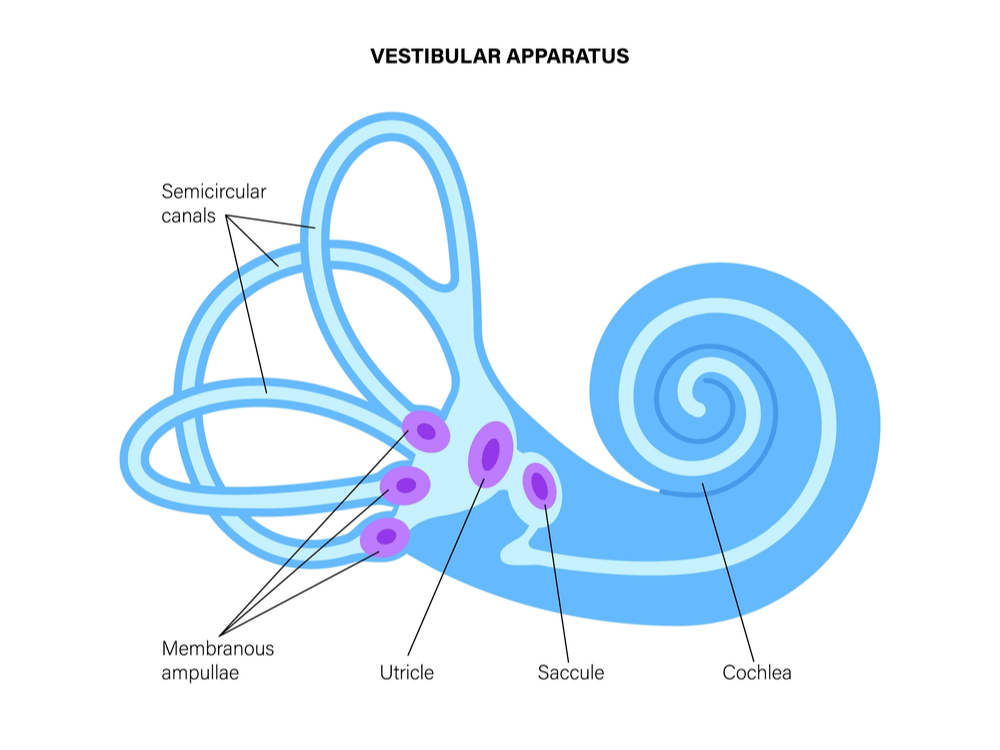
The vestibular system senses head and body movements, including rotation, forward/backward, and up/down motion. It’s also involved in other crucial functions in our daily lives, including stabilizing our gaze and maintaining posture. It allows us to remain upright and stable when moving.
Located in your inner ear, this system includes two types of sensors:
- The otolith organs, which are shaped like two bowls that contain small calcium carbonate crystals inside. As these crystals move, your brain can sense linear movement, such as up and down, right and left, back and forth. This is how you perceive motion going up/down in an elevator or accelerating/decelerating in a car.
- Three loop-shaped semicircular tubes filled with fluid and covered in fine hairs, which sense rotational movement. This sensory system plays a role in sensing and providing feedback when you move your head at different angles.
These sensors send messages through the vestibular nerve to the parts of the brain that control eye movement, balance, and posture. This includes, among others, the brainstem, cerebellum, thalamus, and cerebral cortex. The messages are always present; even if you’re not moving, the vestibular system is “feeling” the effects of gravity pushing you down.
In contrast to sight and hearing — which are senses that you can readily appreciate by closing your eyes or covering your ears — the impact of the vestibular system is harder to understand. Under regular circumstances, we are completely unaware of a separate “feeling” coming from normal vestibular function.
In contrast, patients with a vestibular disorder notice something is wrong. Even simple activities like walking or standing up can become challenging, with patients describing symptoms like vision problems, imbalance, and dizziness.
How Does a Concussion Affect the Vestibular System?
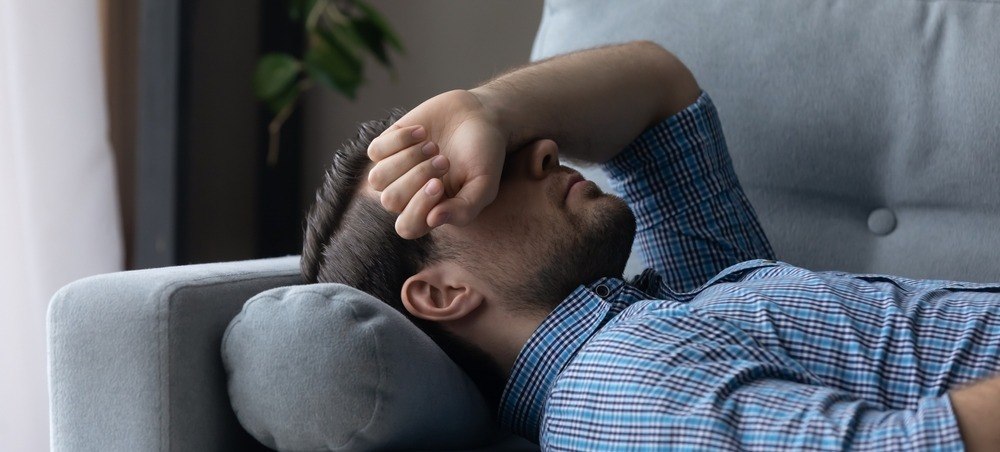
Depending on how the injury occurred and what part of the brain was affected, a concussion may affect the vestibular system in different ways.
Mild traumatic brain injury (mild TBI) can impact the part of the vestibular system located in your inner ear. The most frequent vestibular injury after a concussion is benign paroxysmal positional vertigo (BPPV), which affects around one-third of concussed patients. Even injuries that were not the result of a direct hit to the head, such as whiplash, can cause BPPV.
BPPV occurs when the otolith crystals are dislodged and get stuck in one of the semicircular canals. This causes that particular semicircular canal to become sensitive to certain head position changes. For this reason, BPPV is usually easy to diagnose: Patients tend to suffer vertigo with very specific head movements, not all the time.

BPPV usually only happens on one side of the head, but it can happen on both sides. Patients with BPPV experience vertigo, involuntary eye movement (nystagmus), and nausea with sudden changes in position, such as when getting up or looking around. These attacks usually only last a few seconds but can occur multiple times a day. They can also lead to fatigue, poor sleep quality, and malaise.
Concussions can also affect the vestibular system indirectly by affecting the parts of the brain that control movement and balance. Under normal circumstances, the brain maintains a complex, dynamic relationship (called neurovascular coupling) between neurons and the blood vessels that supply them with oxygen and nutrients. If this dynamic is altered or disrupted, the affected brain regions don’t function normally.
Post-concussion neurovascular coupling dysfunction can affect the brainstem, cerebellum, thalamus, or cerebral cortex. Changes in any one of those regions could lead to vestibular issues such as imbalance, vertigo, and generalized dizziness.
Since concussions may cause damage directly to the inner ear, indirectly by affecting the parts of the brain that control balance, or a combination of both, it is crucial to obtain an accurate diagnosis and appropriate treatment to increase your chances of a full recovery.
Symptoms of Vestibular Dysfunction after a Concussion
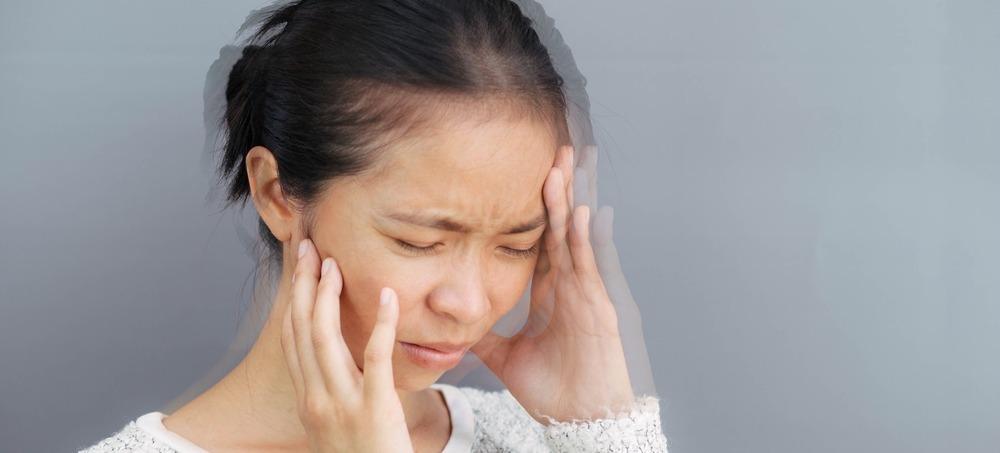
Dizziness is one of the most common concussion symptoms, and it’s often — but not always — associated with vestibular problems. (Sometimes, it can be caused by other issues, such as disruption to the autonomic nervous system).
What patients describe as general dizziness actually covers a few different symptoms:
- Vertigo: You feel like the world is spinning or rotating around you. Some patients also describe it as a sudden falling sensation or feeling that the ground is moving from under their feet.
- Presyncope: You feel lightheaded and weak, as if you’re about to faint, but you don’t actually pass out.
- Unsteadiness: Your balance feels wrong, and you feel unsteady when walking. Patients sometimes describe it as feeling like they’re drunk or about to fall.
Vestibular dysfunction can lead to various other symptoms of a concussion, such as motion sensitivity, nausea, tiredness, blurred vision, and difficulty concentrating. It’s common for patients who are dizzy to avoid moving their head, which may cause headaches and a stiff neck. In addition, they may feel anxious about doing their normal daily activities, and they end up avoiding physical activity or even going out alone.
Triggers that can bring on vestibular symptoms include:
- Fast movements of the head
- Busy environments (such as the grocery store)
- Crowded places
- Changes in position (such as bending over, getting in and out of bed)
- Driving or other types of movement
If you live in Provo, Salt Lake City, or anywhere else in the Utah valley area, we can help you recover from your concussion and reduce your chance of long-term symptoms. We are in network for most types of medical insurance. Schedule your evaluation today.
How Does Vestibular Therapy Work?
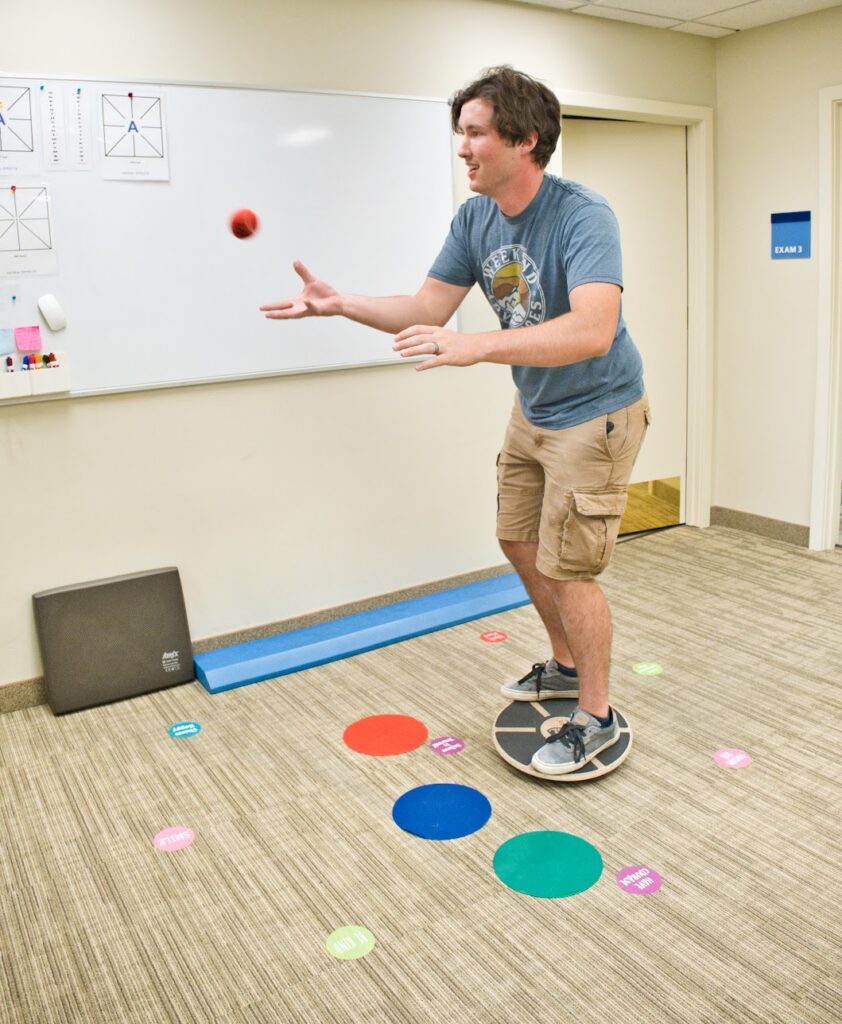
Vestibular therapy is a form of physical therapy designed to help patients who experience balance problems. This is one of the most-effective and evidence-based ways to treat vestibular impairments after a concussion.
It works by teaching your brain how to process sensory information during movement using a variety of exercises, such as balancing on one leg with your eyes closed or focusing on a point while moving your head.
The three common types of exercises in vestibular therapy include:
Gaze Stabilization Exercises
The vestibular system plays a crucial role in vision, allowing your eyes to stay focused on an object even when your head is moving. This is known as the vestibulo-ocular reflex.
After a concussion, this reflex can be damaged, causing vertigo and vision problems. Patients may notice what they see shakes or moves when reading, changing positions, or trying to focus on one object.
Gaze stabilization exercises improve focus during head movements. A common exercise involves focusing on one object while repeatedly moving your head left and right, then up and down for a few minutes.
Habituation Exercises
These exercises are very useful for patients who experience constant dizziness when they move around. They work by exposing patients to the specific movements that affect them, causing a controlled level of dizziness. The goal is to force the brain to get used to the movement gradually.
In the long term, the intensity of dizziness with these exercises decreases as the brain learns to ignore the abnormal signals from the inner ear system.
Balance Training
Balance exercises improve steadiness, allowing you to feel comfortable during your normal daily activities. Exercises are designed to help improve your ability to stand, walk, and bend over without losing balance.
After vestibular rehabilitation, most patients experience:
- Decreased dizziness symptoms
- Decreased nausea
- Improved concentration and memory
- Improved balance in standing or sitting
- Decreased risk of falling
- Improved ability to focus on objects near and far
- Improved neck mobility or reduced neck pain and stiffness
- Less fatigue and improved sleep
- Decreased anxiety
- Increased confidence to return to desired activities and hobbies
Treatment at Neural Effects

Vestibular evaluation is key to a good outcome from any concussion therapy program. Post-concussion treatment at Neural Effects starts with a careful physical examination and assessment of your concussion symptoms, as well as a review of your medical history. If you have a history of balance disorders, let us know during your assessment.
The physical examination includes a cranial nerve exam to assess facial nerves that control movement and senses, as well as a cervical spine exam to identify fractures or a herniated disc. In addition, patients take a balance assessment called the Balance Error Scoring System (BESS), where they complete various tasks with their eyes closed.
We ask each patient to list and rate their post-concussion symptoms from zero (no symptoms) to six (severe). Doing so helps us understand which systems have been affected by your concussion.
Our therapists then use the results from this assessment to devise the best treatment plan for you.
We use vestibular therapy with every patient. Depending on your symptoms, our therapists use a combination of the exercises described above to address your particular vestibular dysfunction.
The exercises will likely cause some discomfort and make your dizziness worse at first, but this is a good sign as it means that you’re doing the exercises properly. Your vestibular system can only “re-learn” to understand balance signals if you practice the movements that make you dizzy. Eventually, your symptoms should decrease until they are more manageable and, in most cases, completely resolved.
In addition to vestibular therapy, our sessions typically include:
Cardio exercise: This involves short bursts on a stationary bike or a treadmill to raise your heart rate. Doing so improves blood flow in the brain and makes other therapies more effective. We help you determine how to identify your “sub-symptom threshold,” i.e., how heavily you can exercise without severely increasing your symptoms.

Vision therapy: Vision therapy is used when patients have symptoms related to vision, such as blurry vision, eye strain, or headaches when reading. Visual symptoms are common after a brain injury.

Neuromuscular therapy: Neuromuscular therapy involves highly-specialized exercises to correct muscle pain and dysfunction caused by trigger points, muscle soreness, and other muscle problems. For concussed patients, the aim is to relax neck muscles to reduce post-injury tension, improve blood flow to the brain, and increase head stability and mobility.

Cognitive therapy: Patients also complete cognitive exercises, such as memorizing pictures, solving a logic puzzle, and finding patterns. Doing so improves cognitive deficits such as difficulty making decisions, trouble focusing, brain fog, and more.

After each session, you will receive homework exercises including aerobic exercises, cognitive exercises, and controlled breathing and relaxation techniques. Completing these exercises gives you a better chance of a fast and complete recovery.
Can I Try Vestibular Rehabilitation at Home?
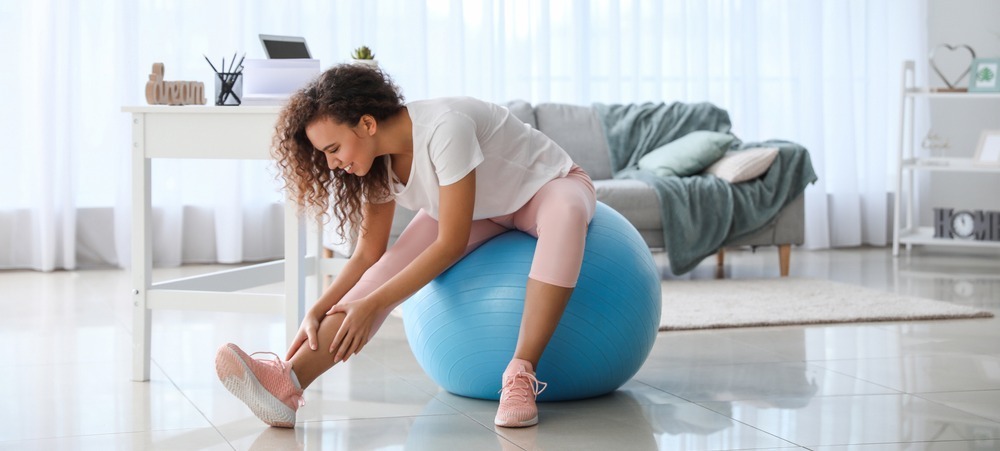
If you’re experiencing dizziness and vertigo after head trauma, it’s tempting to look online for vestibular exercises to do at home.
However, before you start, you should seek medical help to check which part of your vestibular system is not working properly (or if it’s the vestibular system at all, as dizziness can also develop for other reasons). This will allow you to understand what exercises may be beneficial to address your symptoms.
Using generic vestibular exercises is not the best option, as they may make you feel worse. For example, gaze stabilization exercises involve trying to keep focus on one point while moving your head. This approach works for patients who have been affected equally on the left and right sides. However, for patients who have been affected predominantly on one side, these exercises will not help and may even make you feel worse. You need a trained therapist to adjust these exercises to your particular situation.
Also, if you have undiagnosed BPPV, no amount of vestibular exercises at home are going to help relieve your symptoms. This condition needs a repositioning exercise, such as the Epley Maneuver, which forces the otolith crystals back to their proper position. It only takes a few minutes, but it needs to be performed by a trained professional, such as a vestibular therapist, physical therapist, or sports medicine practitioner. Afterward, they might teach you to perform it, or a similar maneuver, at home.
If you’re already receiving vestibular therapy and want extra ways to improve at home, choose activities that stimulate your vestibular system as tolerated. Going for a daily walk, playing a sport with a ball, and dancing are all great if you can manage them (but only after you’re cleared by your healthcare provider to resume post-concussion activity).
If you live in Provo, Salt Lake City, or anywhere else in the Utah valley area, we can help you recover from your concussion and reduce your chance of long-term symptoms. We are in network for most types of medical insurance. Schedule your evaluation today.
